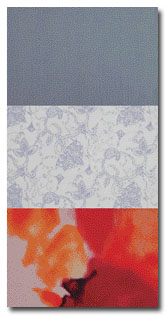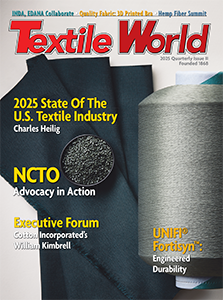The Netherlands — May 8, 2013 — DSM Dyneema, the manufacturer of ultra high molecular weight
polyethylene (UHMwPE) fiber, branded as Dyneema®, and world leader in life protection materials,
today announced a major new milestone for its lightweight, cost-effective Dyneema® BT10 ballistic
tape. FNSS Savunma Sistemleri A.Ş., a leading producer of armored vehicles based in Turkey, won an
important contract from an Asian government to manufacture 8×8 “PARS©” amphibious armored personnel
vehicles featuring spall liners made with BT10. Importantly, cost effective BT10 combined with its
superior ballistic performance enabled FNSS to meet the highly stringent specifications for the
spall liner.
Spall liners protect vehicle occupants from high-velocity fragments that are created when,
for example, explosive shells send shock waves through the vehicle’s metal armor. In developing the
armored vehicles, FNSS says it put special emphasis on mobility, protection, and payload. FNSS will
use Dyneema® BT10 tape for spall liners in 257 PARS© (Turkish for Anatolian leopard) vehicles. The
amphibious vehicle will be supplied in 12 variants during 2013-2018.
“At FNSS, we take life protection very seriously and are committed to providing the highest
possible degree of safety to the men and women who operate and travel in the vehicles we produce,”
said Javier Garcia, Chief Engineer and ballistics specialist at FNSS. “This is why we selected BT10
from DSM Dyneema – one of the toughest, most lightweight and cost-effective ballistic-resistant
materials in the world. Spall liners made with BT10 can make a tremendous difference in
life-threatening situations. Not only was it a good business decision to choose this
high-performance tape technology, but it’s a good feeling to know that we are doing all we can to
help protect service people from harm.”
Dyneema® ballistic tape provides an innovative materials solution to the conflicting demands
of mobility and personnel protection at an affordable cost. Weight reduction helps vehicles to
remain agile and keep operational and maintenance costs low. The tape as a spall liner delivers a
winning combination of high-end properties, including proven ballistic performance against
improvised explosive devices (IEDs) and explosively formed penetrators (EFPs). Thanks to the PE
material properties, The Dyneema® ballistic tape technology is also safe and easy to handle and
process, such as cutting, drilling and mounting.
“DSM Dyneema sees tremendous growth potential for BT10 in the defence market because of its
ability to meet multiple customer needs while providing exceptional ballistic performance for life
protection,” said Christian Widdershoven, global vice president at DSM Dyneema. “It allows
designers and manufacturers to balance the requirements for better ballistic performance with
agility under increased vehicle payloads, all at a competitive cost level. We are extremely pleased
that FNSS was able to leverage the benefits of Dyneema® BT10 tape to win this important contract.”
FNSS has an extensive product line consisting of a universal family of tracked and wheeled
armored combat vehicles and combat utility vehicles. It already supplies the armed forces of Turkey
and allied nations.
Dyneema® tape materials are woven and laminated sheets made from UHMwPE tape. Part of a
growing range of lightweight and ultra-high armor protection material solutions from DSM Dyneema,
BT10 has been tested and certified according to international standards.
Posted on May 21, 2013
Source: DSM Dyneema






